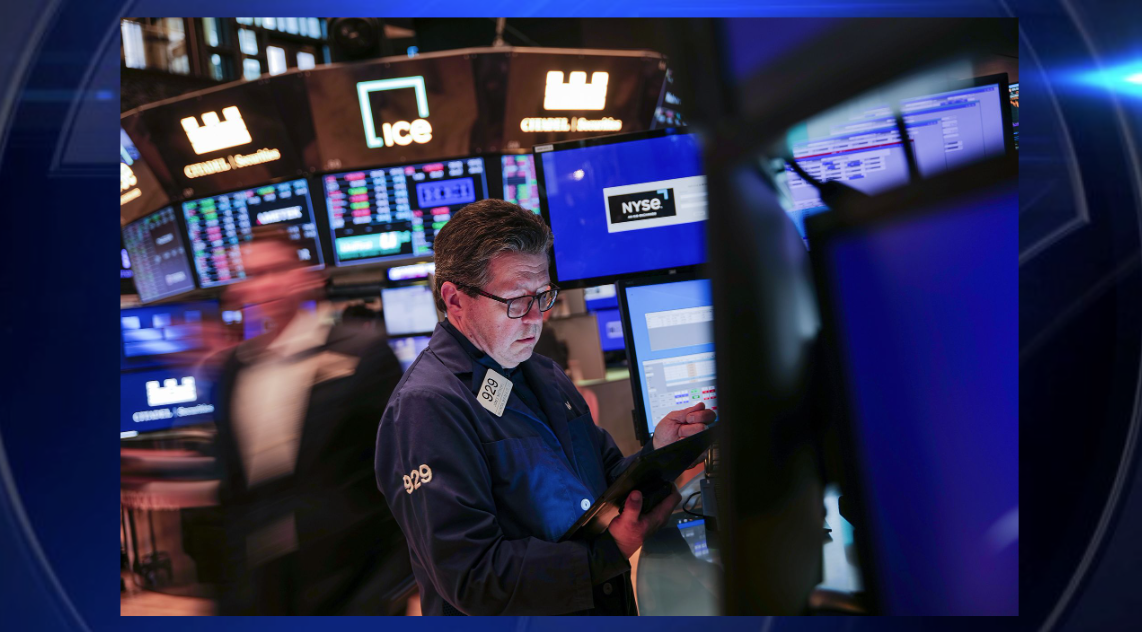US Stock Market Experiences Significant Decline Amid Economic Policy Concerns
In a tumultuous trading session on Monday, US stocks fell sharply, cryptocurrency values dropped, and the volatility index, often referred to as Wall Street’s fear gauge, reached its peak for the year. The downturn was largely attributed to investor apprehensions regarding President Donald Trump’s economic policies, particularly concerning tariffs.
Market Performance Overview
The selloff began as soon as the market opened, with all three major indexes showing significant losses. The Dow Jones Industrial Average concluded the day down by 890 points, a decline of 2.08%, pulling back from an intraday deficit that exceeded 1,100 points. The S&P 500 fell by 2.7%, while the Nasdaq Composite experienced a more pronounced downturn of 4%, marking its most significant daily drop since September 2022.
- Dow Jones: -890 points (-2.08%)
- S&P 500: -2.7%
- Nasdaq Composite: -4%
This decline has compounded a difficult month for the market, erasing the benchmark S&P 500’s gains achieved since the US presidential election held in November.
Investor Sentiment and Recession Concerns
Anxiety surrounding Trump’s statements about economic transitions significantly impacted market sentiment. During a recent interview, Trump mentioned the possibility of a “period of transition” for the US economy and did not dismiss the potential for a recession. Attributing the downturn primarily to uncertainty over his administration’s tariff strategies, he remarked, “I hate to predict things like that. There is a period of transition because what we’re doing is very big.”
The concern stretched across various sectors, but technology stocks were particularly hard-hit. The so-called “Magnificent Seven”—comprising Alphabet, Amazon, Apple, Meta, Microsoft, Nvidia, and Tesla—saw significant declines, contributing to the overall drop in the S&P 500, which was nearly 9% below its record high achieved in February.
Key Stock Performances
Tesla shares plummeted 15.4%, erasing almost all gains made since the presidential election. The company’s stock has dipped close to 45% since the beginning of the year, influenced by ongoing criticism of CEO Elon Musk and weak sales in European markets. Similarly, Nvidia shares fell 5%, and Palantir was down by 10%.
Anthony Saglimbene, chief market strategist at Ameriprise, noted, “President Trump’s comments not necessarily taking a recession off the table unnerved investors who were already unnerved.”
Influence of Tariff Policies
The recent selloff can be largely linked to uncertainties associated with Trump’s fluctuating stance on tariffs. The S&P 500 endured a 3.1% loss the previous week, marking its worst performance since September.
Experts have noted that Trump’s trade threats and tariff announcements have created an environment of unpredictability. Among these threats are potential major tariffs on imports from Canada and Mexico and a planned increase in tariffs on Chinese goods from 10% to 20%. Furthermore, Trump indicated that tariffs might escalate in the future, with comments suggesting ongoing adjustments.
David Bahnsen, chief investment officer at the Bahnsen Group, indicated, “The talk of tariffs is, in a lot of ways, worse than the implementation of them. The tariff talk, reversal, speculation, and chaos only fosters uncertainty.” He further expressed a belief that prolonged uncertainty may adversely affect economic activities.
Broader Economic Impacts
As the stock market weathered rough conditions, other signals of economic stress also emerged. Rising layoffs and declining hiring rates accompanied falling consumer confidence and increasing inflation pressures. In light of this, the yield on the 10-year US Treasury note fell to 4.2%, reflecting investors’ movement towards safer government bonds amidst concerns for uncertain economic growth.
Looking ahead, market participants are keeping a close eye on upcoming indicators of inflation set to be released this week, hoping to discern whether inflationary pressures remained intact in February.
Analysts suggest that a recession, typically defined by two consecutive quarters of negative economic growth, may still be on the horizon, as various economic indicators signal turbulence ahead. Sam Stovall, chief investment strategist at CFRA Research, commented, “How long this period of investor caution persists depends on how quickly it will take the global trade clouds, and the resulting threat of recession, to dissipate.”
As the market continues to grapple with uncertainty, investors will be watching closely for signals that might clarify the economic landscape in the coming months.

